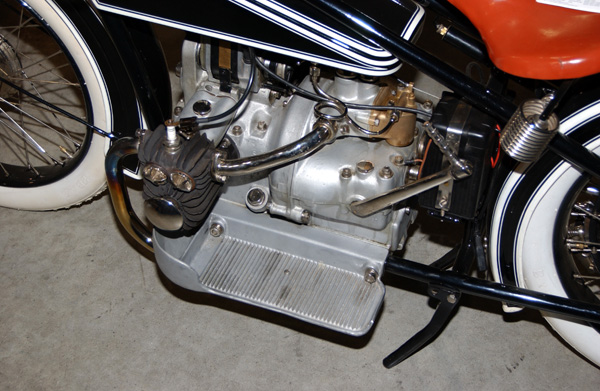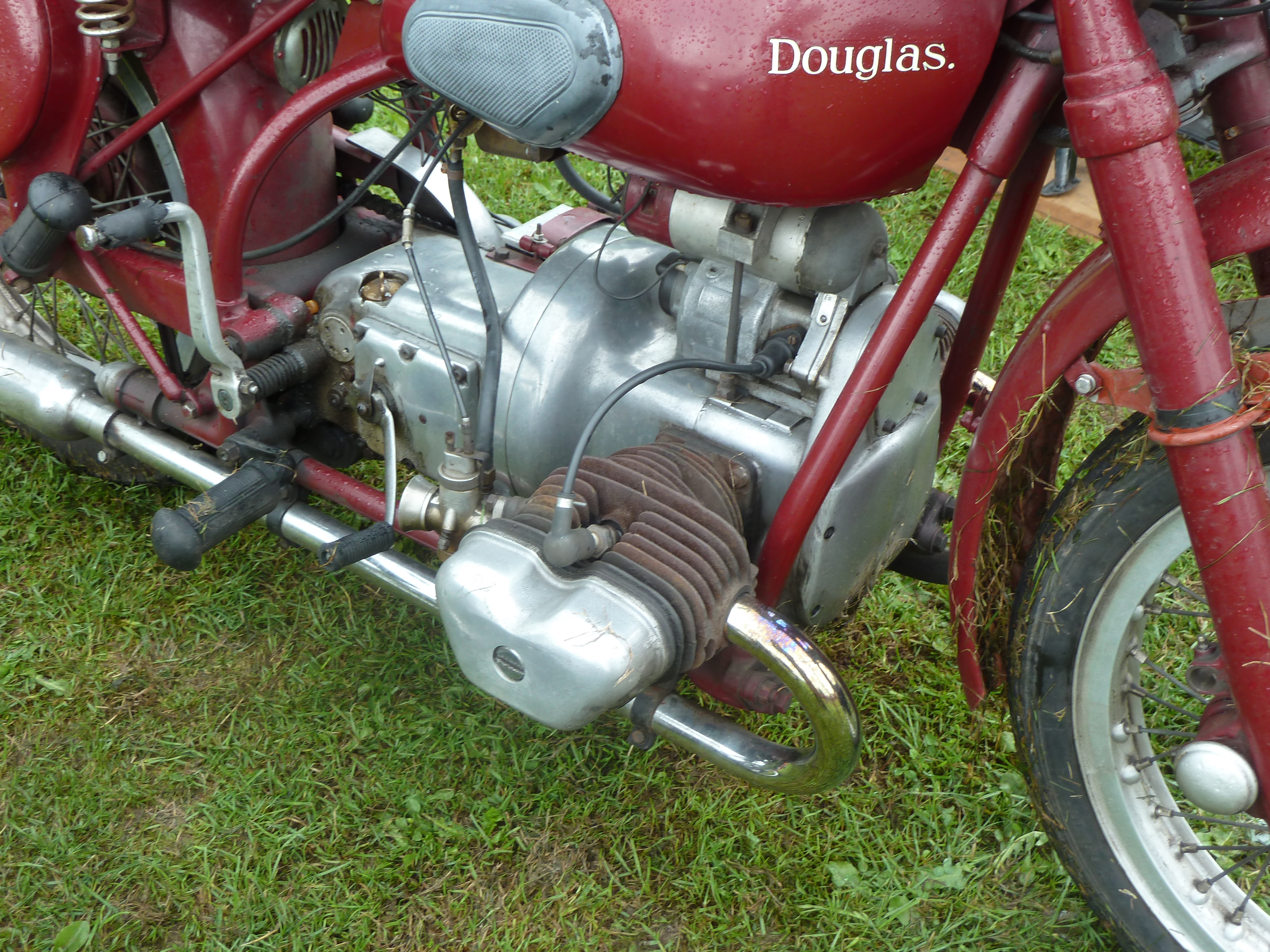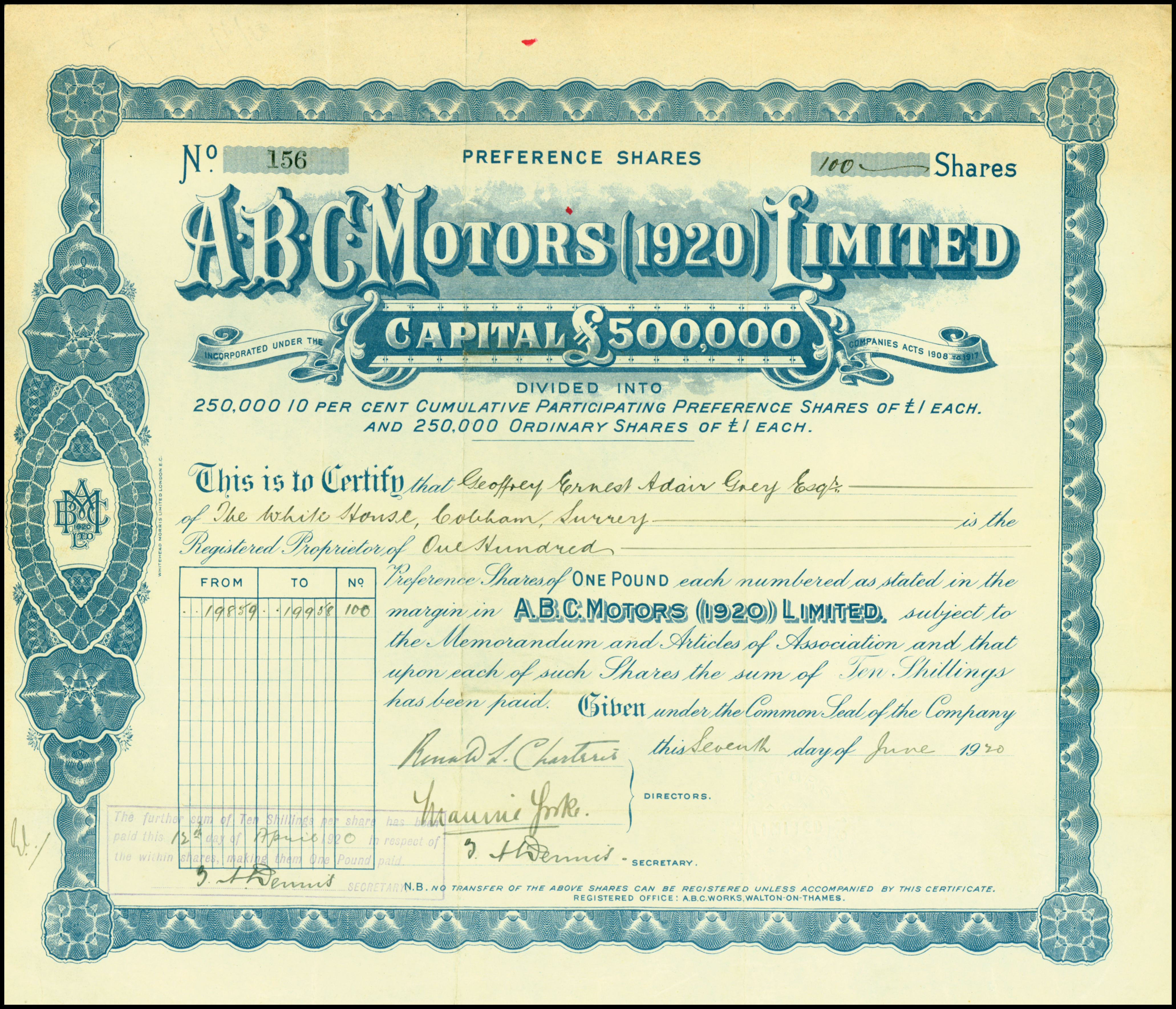|
Bmw R32
The BMW R32 was the first motorcycle produced by BMW under the BMW name. An aircraft engine manufacturer during World War I, BMW was forced to diversify after the Treaty of Versailles banned the German air force and German aircraft manufacture. BMW initially turned to industrial engine design and manufacturing. History In 1919, BMW designed and manufactured the flat-twin M2B15 engine for Victoria Werke AG of Nuremberg. The engine was initially intended as a portable industrial engine, but found its main use in Victoria motorcycles. The engine was also used in the Helios motorcycle built by Bayerische Flugzeugwerke, which was later merged into BMW AG. Bayerische Flugzeugwerke also manufactured a small two-stroke engined motorcycle, called the Flink, which was not successful. After the merger, General Director of BMW Franz Josef Popp asked Design Director Max Friz to assess the Helios motorcycle. Upon completing his assessment, Friz suggested to Popp that the best thing t ... [...More Info...] [...Related Items...] OR: [Wikipedia] [Google] [Baidu] |
Flat-twin
A flat-twin engine is a two-cylinder internal combustion engine with the cylinders on opposite sides of the crankshaft. The most common type of flat-twin engine is the boxer-twin engine, where both pistons move inwards and outwards at the same time. The flat-twin design was patented by Karl Benz in 1896 and the first production flat-twin engine was used in the ''Lanchester 8 hp Phaeton'' car released in 1900. The flat-twin engine was used in several other cars since, however a more common usage is in motorcycles; early models oriented the cylinders in line with the frame, however later models switched to the cylinders being perpendicular to the frame to provide even cooling across both cylinders. Flat-twin engines were also used in several aircraft up until the 1930s and in various stationary applications from the 1930s to the 1960s. The Australian lawnmower manufacturer Victa also produced a flat-twin engine push mower from August 1975 to 1980 dubbed as the ‘Twin 500’ and � ... [...More Info...] [...Related Items...] OR: [Wikipedia] [Google] [Baidu] |
Wet Sump
Within piston engines, a wet sump is part of a lubrication system whereby the crankcase sump is used as an integral oil reservoir. An alternative system is the dry sump, whereby oil is pumped from a shallow sump into an external reservoir.Wet sump and dry sump compared - https://www.knowyourparts.com/technical-resources/engine/oil-system-differences/#:~:text=Dry%20Oil%20Systems%20Wet%20sump%20systems%20store%20the,is%20used%20to%20pump%20oil%20from%20the%20motor. Piston engines are lubricated by oil which is pumped into various bearings, and thereafter allowed to drain to the base of the engine under gravity. In most production automobiles and motorcycles, which use a wet sump system, the oil is collected in a capacity pan at the base of the engine, known as the sump or oil pan, where it is pumped back up to the bearings by the internal oil pump. A wet sump offers the advantage of a simple design, using a single pump and no external reservoir. Since the sump is internal, the ... [...More Info...] [...Related Items...] OR: [Wikipedia] [Google] [Baidu] |
Shaft Drive Motorcycles
Shaft may refer to: Rotating machine elements * Shaft (mechanical engineering), a rotating machine element used to transmit power * Line shaft, a power transmission system * Drive shaft, a shaft for transferring torque * Axle, a shaft around which one or more wheels rotate Vertical narrow passages * Elevator shaft, a vertical passage housing a lift or elevator * Ventilation shaft, a vertical passage used in mines and tunnels to move fresh air underground, and to remove stale air * Shaft (civil engineering), an underground vertical or inclined passageway * Pitch (ascent/descent), a significant underground vertical space in caving terminology * Shaft mining, the method of excavating a vertical or near-vertical tunnel from the top down, where there is initially no access to the bottom * Shafting, illicit travelling through shafts Long narrow rigid bodies * The body of a column, or the column itself * Handle (grip) of hand-tools * Shaft (golf), the long, tapered tube which c ... [...More Info...] [...Related Items...] OR: [Wikipedia] [Google] [Baidu] |
Motorcycles Powered By Flat Engines
A motorcycle (motorbike, bike, or trike (if three-wheeled)) is a two or three-wheeled motor vehicle Steering, steered by a Motorcycle handlebar, handlebar. Motorcycle design varies greatly to suit a range of different purposes: Long-distance motorcycle riding, long-distance travel, Motorcycle commuting, commuting, cruising (driving), cruising, Motorcycle sport, sport (including Motorcycle racing, racing), and Off-roading, off-road riding. Motorcycling is riding a motorcycle and being involved in other related social activity such as joining a motorcycle club and attending motorcycle rally, motorcycle rallies. The 1885 Daimler Reitwagen made by Gottlieb Daimler and Wilhelm Maybach in Germany was the first internal combustion, petroleum-fueled motorcycle. In 1894, Hildebrand & Wolfmüller became the first series production motorcycle. Globally, motorcycles are comparably popular to cars as a method of transport. In 2021, approximately 58.6 million new motorcycles were sold ar ... [...More Info...] [...Related Items...] OR: [Wikipedia] [Google] [Baidu] |
BMW Motorcycles
BMW Motorrad is the motorcycle A motorcycle (motorbike, bike, or trike (if three-wheeled)) is a two or three-wheeled motor vehicle steered by a handlebar. Motorcycle design varies greatly to suit a range of different purposes: long-distance travel, commuting, cruisin ... brand of BMW, part of its Corporate and Brand Development division. It has produced motorcycles since 1923, and achieved record sales for the fifth year in succession in 2015. With a total of 136,963 vehicles sold in 2015, BMW registered a growth of 10.9% in sales in comparison with 2014. In May 2011, the 2,000,000th motorcycle produced by BMW Motorrad was an R1200GS. History The company began as an aircraft engine manufacturer in the early 20th century and through World War I. BMW manufactured its first motorcycle in 1923, the BMW R32, R32, which featured a flat-twin, flat-twin boxer engine. BMW Motorrad still uses the flat-twin boxer configuration, but now manufactures motorcycles with a variety ... [...More Info...] [...Related Items...] OR: [Wikipedia] [Google] [Baidu] |
History Of BMW Motorcycles
BMW's motorcycle history began in 1921 when the company commenced manufacturing engines for other companies. BMW's own motorcycles—sold under the BMW Motorrad brand—began in 1923 with the BMW R 32, which was powered by a flat-twin engine (also called a "boxer-twin" engine). Production of motorcycles with flat-twin engines continues to this day, however BMW has also produced many models with other types of engines. Motorcycle history 1921–1938 At the end of World War I, the Treaty of Versailles demanded that BMW cease production of aircraft engines. To remain in business, the company began producing small industrial engines (along with farm equipment, household items and railway brakes). In 1920, BMW M2B15 flat-twin petrol engine was released. Despite being designed as a portable industrial engine, the M2B15 was also used by several motorcycle manufacturers, including for the 1920–1923 Victoria KR1 and the 1920–1922 Bayerische Flugzeugwerke (BFw) ''Helios'' motorcy ... [...More Info...] [...Related Items...] OR: [Wikipedia] [Google] [Baidu] |
BMW F650 Single
The BMW F650 is a family of motorcycles developed by BMW Motorrad beginning in 1993.Motorcycle News, February 2009, p29 Models included the F650St Strada and from 1994, the F650 (dubbed the 'Funduro') which, due to some subtle differences, was considered to be a more dual/multi purpose motorcycle with some off-road capability. The 1993 - 2000 F650 was the first single-cylinder motorcycle from BMW since the 1960–1966 R27, and the first chain driven motorcycles from BMW. Newer models (post-2000) included the F650CS Scarver, F650GS, and F650GS Dakar. 1993–2000: F650 and F650St Strada The BMW F650St Strada was introduced to Europe in 1993, a variant F650 (dubbed the 'Funduro') in 1994 and then to the United States in 1997. The BMW F650 models were jointly designed by BMW and Aprilia, who also launched their own very similar model called the Aprilia Pegaso 650 (a 654cc single cylinder, 5 valve motorcycle). The BMW version was assembled in Italy by Aprilia and these were p ... [...More Info...] [...Related Items...] OR: [Wikipedia] [Google] [Baidu] |
Indian (motorcycle)
Indian Motorcycle (or ''Indian'') is an American brand of motorcycles owned and produced by American automotive manufacturer Polaris Inc.Indian History Home Spelling as pe U.S. Supreme Court 1929-31 Originally produced from 1901 to 1953 in Springfield, Massachusetts, United States, Hendee Manufacturing Company initially produced the motorcycles, but the name was changed to the Indian Company in 1923. In 2011, [...More Info...] [...Related Items...] OR: [Wikipedia] [Google] [Baidu] |
Drive Shaft
A drive shaft, driveshaft, driving shaft, tailshaft ( Australian English), propeller shaft (prop shaft), or Cardan shaft (after Girolamo Cardano) is a component for transmitting mechanical power and torque and rotation, usually used to connect other components of a drivetrain that cannot be connected directly because of distance or the need to allow for relative movement between them. As torque carriers, drive shafts are subject to torsion and shear stress, equivalent to the difference between the input torque and the load. They must therefore be strong enough to bear the stress, while avoiding too much additional weight as that would in turn increase their inertia. To allow for variations in the alignment and distance between the driving and driven components, drive shafts frequently incorporate one or more universal joints, jaw couplings, or rag joints, and sometimes a splined joint or prismatic joint. History The term ''driveshaft'' first appeared during the mid ... [...More Info...] [...Related Items...] OR: [Wikipedia] [Google] [Baidu] |
ABC Motorcycles
ABC motorcycles was a British motorcycle manufacturer established in 1914 by Ronald Charteris in London. Several British motorcycle firms started up with the name "ABC", including Sopwith. The All British Engine Company Ltd. of London was founded in 1912 and later changed to ABC Motors Ltd. With chief engineer Granville Bradshaw, Charteris built a range of engines throughout the First World War. From 1913 ABC produced motorcycle engines. In 1918, ABC made a motorcycle with a 400 cc flat-twin engine mounted with its cylinders across the frame, several years before BMW adapted the design. Bradshaw challenged BMW's use of his patented design in 1926. In 1919 ABC also produced the Scootamota – an early motor scooter. The company stopped producing motorcycles after 1923 because of competition from cheaper manufacturers. Development ABC had always had a close association with the Sopwith aircraft company. They were both at Brooklands and in 1912 a Sopwith with an AB ... [...More Info...] [...Related Items...] OR: [Wikipedia] [Google] [Baidu] |
Total-loss Oiling System
A total-loss oiling system is an engine lubrication system whereby oil is introduced into the engine, and then either burned or ejected overboard. Now rare in four-stroke engines, total loss oiling is still used in many two-stroke engines. Steam engines Steam engines used many separate oil boxes, dotted around the engine. Each one was filled before starting and often refilled during running. Where access was difficult, usually because the oil box was on a moving component, the oil box had to be large enough to contain enough oil for a long working shift. To control the flow rate of oil from the reservoir to the bearing, the oil would flow through an oil wick by capillary action, rather than downwards under gravity. On steamships that ran their engines for days at a time, some crew members would be "oilers" whose primary duty was to continuously monitor and maintain oil boxes. On steam locomotives, access would be impossible during running, so in some cases centralised me ... [...More Info...] [...Related Items...] OR: [Wikipedia] [Google] [Baidu] |
Unit Construction
: ''For the vehicle design where the vehicle's skin is used as a load-bearing element, see Monocoque.'' Unit construction is the design of larger motorcycles where the engine and gearbox components share a single casing. This sometimes includes the design of automobile engines and was often loosely applied to motorcycles with rather different internal layouts such as the flat twin BMW models. Prior to unit construction, the engine and gearbox had their own separate casings and were connected by a primary chain drive running in an oil bath chaincase. The new system used a similar chain drive and both had 3 separate oil reservoirs for engine, gearbox and primary drive. Triumph and BSA were already using cast alloy chaincases and started converting to unit construction in the 1950s. A driving factor behind the BSA/Triumph change was that Lucas had declared an intention to abandon production of motorcycle dynamos and magnetos, and instead produce only alternators. By contrast ... [...More Info...] [...Related Items...] OR: [Wikipedia] [Google] [Baidu] |







.jpg)
